Best Essays of 2020: The 15 Most Shared (and Debated) Columns About Students, Schools & Remote Learning We Published This Year
By The 74 | December 9, 2020
Learning loss. Virtual instruction. Family stress. Student supports. As the nation’s schools shuttered this spring, and then restructured operations for a second disrupted school year, it led to a wave of memorable essays here at The 74 about the challenges being faced by districts, the innovations being tried by teachers and the difficult reality of what it was like to be a public school student in 2020. As we then reached September, and it became apparent that the disruptions caused by coronavirus would also extend well into 2021, a new series of essays took the longer view, of how school leaders, parents and state policymakers should brace for continued hardships. Below are our 15 most memorable essays of the year; you can our latest commentary and analysis delivered straight to your inbox by signing up for The 74 Newsletter.

Pandemic Notebook: Back in March, Brandon Yam woke up and dialed the tech department of the nation’s largest school system in New York City. For two weeks, he writes in this addition to the “Pandemic Notebook” series, Yam fruitlessly pursued the district to learn the status of his application for one of 300,000 devices available for students who lack them. Yam is a junior at highly selective Francis Lewis High School. But he also comes from a poor immigrant family in the city’s Flushing neighborhood, where his parents, a chef and a postal employee, are essential workers and he shares the family’s 10-year-old laptop with five siblings. He writes: “My siblings and I butted heads to get to the router at the center of our living room for a bar of internet connection. … I often pinched the corners of my iPhone 6 screen wide, squinting to see my trigonometry and physics teachers doing practice problems on paper.” Along the way, he learned some sobering lessons about privilege and navigating the digital divide. Now, he writes, “I sit here wondering how many other children have had to act on their own with parents at work — playing the roles of traffic cop, translator and support system.” Read Yam’s full reflection here.
“Pandemic Notebook” registered as The 74’s most read and shared essay series of the year — and we now plan on extending the effort into 2021 as the classroom disruptions caused by coronavirus continue through a second school year. A few other memorable entries from 2020:
- Student Safety: ‘A bird trapped in a golden cage’ — Amid the pandemic, one student’s story of abuse during quarantine (Read the full essay)
- Remote Learning: Part staycation, part home detention, my life during pandemic is a study in contrasts (Read the full essay)
- Family Stress: My mom Is 55, Black, and just returned to work in a doctor’s office in New York City. That’s why I’m scared (Read the full essay)
- Go Deeper: See our full “Pandemic Notebook” archive
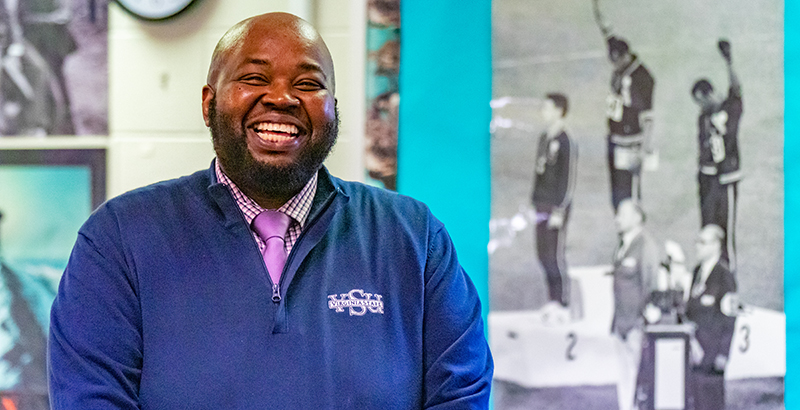
Resilience: “Dear Parents/Guardians, I know that, amid all the uncertainty and fear right now, it’s overwhelming to suddenly take over as your children’s teacher. Don’t worry — they’re going to learn just fine with you in charge.” So begins an open letter from Rodney Robinson, 2019 National Teacher of the Year and a 20-year veteran educator. “But we could all use a little extra help at the moment, so here are some tips to help you get through the next few months while the education system adjusts.” From self-care for parents and patience in making decisions to academic and social-emotional support, he writes, “Remind yourself that although we are experiencing perhaps the greatest challenge since World War II, everything is going to work out. Love, empathy and compassion will get us through this pandemic… We can’t wait to see you when school opens.” Read the full letter.
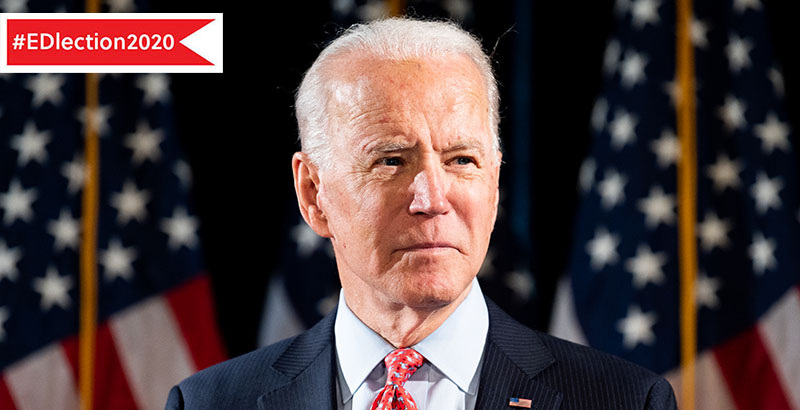
Politics: This past spring, the Democrats formed six so-called Unity Task Forces intended to give hope and unification to the party. They may do so for some forces within the party, writes contributor Howard Fuller, but to Black and brown families who have chosen public charter schools to ensure their children get the best education possible, the makeup of the Task Force on Education is an insult. “What is grossly obvious when looking at the list of advisers creating educational policy for the Democratic Party platform is that the 3.3 million students and over 219,000 teachers attending and working in public charter schools have not been considered at all. … Joe Biden, you and your Democratic Party are sending a message to the families of public charter schools that we don’t matter because our educational choices go against the status quo … you are sending the message that you do not support the right of Latino and Black parents to make these critically important, and potentially lifesaving, choices for their children. We demand to be seen, valued and heard. We want to be more than photo ops to be used in your campaign literature. We will not accept second-class citizenship. We demand our seat at the table so you can hear and learn from our collective expertise and experiences, which come out of rich histories of struggle against oppression in this country. … You cannot ignore us and expect us to march blindly to the ballot box to support you.” Read Fuller’s open letter.
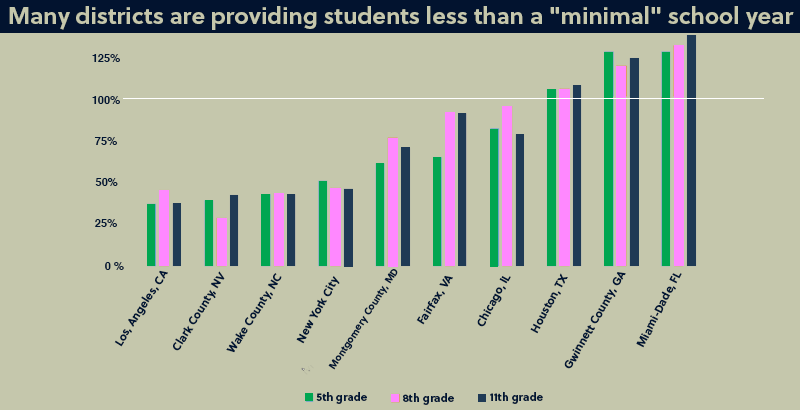
Remote Learning: Back in August, contributor Chad Aldeman calculated that the remote learning schedule for his local public school district of Fairfax, Virginia, was offering less than half of a typical school year to his first-grade son. This trend is not unique to Fairfax: The majority of American students are experiencing either a partial school day or week, or fully virtual classes. While Aldeman doesn’t question the logic of district decisions in this regard, he wondered — collectively, how much learning time will these policies cost students? To find out, he compared the number of hours of live instruction planned this year for 5th-, 8th- and 11th-graders in 10 large districts with their state’s requirement for the amount of school time students should normally receive. Seven of the 10 — Los Angeles; Clark County, Nevada; Wake County, North Carolina; New York City; Montgomery Country, Maryland; Fairfax; and Chicago — are planning to deliver far less instructional time to students than normal. But Houston; Gwinnett County, Georgia; and Miami-Dade, Florida, are on track to surpass the minimal state requirements for instructional hours. Read the full analysis.

Equity: The killing of George Floyd and subsequent calls to action by the Black Lives Matter movement drove home some long-ago lessons for contributor Derrell Bradford about the continuum on which race, the police and education interact. “If you think about race and education and policing as intertwined, there is also no moment when you do not see how they conspire for the betterment or detriment of the country’s children; and, for much of my adult life, the country’s Black children. … And at this moment, the overlap could not be clearer. You cannot solve a problem of Black lives with an all-lives solution. We can’t have an ‘all education matters’ approach to the challenges of Black education. One that doesn’t require states or districts to meet the needs of kids who, too, are fighting to be free and equal, but instead demands they conform to systems that have not historically worked for them in the name of the public good. All education cannot matter until Black education does. … As the only people in this nation’s history who have been both physically enslaved and intellectually starved as a result of not just sentiment, or economics, but public policy, no solution that requires the sacrifice of Black people to be successful will be a solution that works for Black people. The story of Black people is the story of our country’s efforts to live up to its founding values. Black lives matter, and Black education matters, because everyone’s freedom matters. And only when Black folks are safe to both learn, and live, will all Americans be free.” Read the full essay.
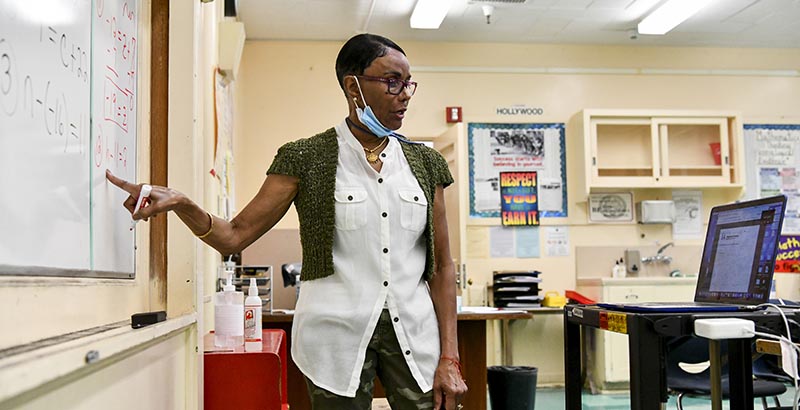
Instruction: In just a few short months, contributor Mandy Peyrani’s city of Houston has experienced massive challenges with the COVID-19 pandemic. Just as nurses work on the front lines battling the coronavirus, educators are on the front lines of a battle against learning loss. Teachers have always been heroes — and this moment, she writes, presents an opportunity like never before to show the world why that’s true. Despite unprecedented instructional challenges, distance learning can be viewed as a once-in-a-generation chance for teachers to hone their craft. In virtual classrooms, instructional coaches can efficiently dip in and out of lessons, offering immediate feedback, and in schools where the best educator on a given topic delivers the lesson, colleagues can witness that educator’s pedagogical techniques, gauge the response from the class and then integrate them into their own toolkits — a kind of real-time professional development. “Teachers everywhere can and should meet this moment to show just how important we are to eventually achieving normalcy amid a pandemic — and to exemplify the difference we can make, particularly for kids who need our support most.” Read the full essay.
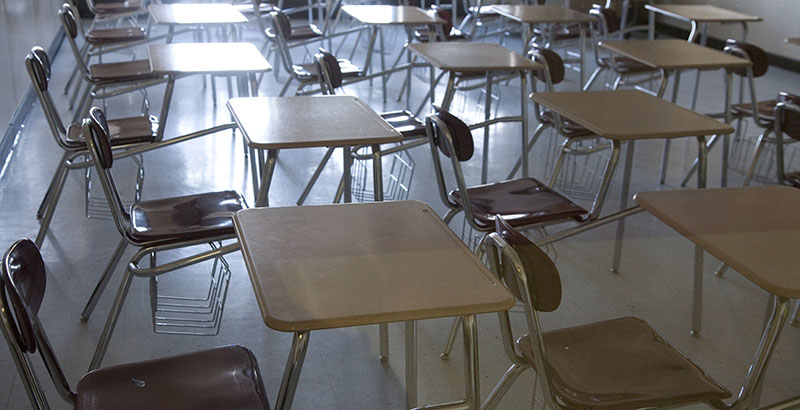
2021 and Beyond: Considering how little we knew about coronavirus in May, it was striking to contributor Andrew Rotherham how much certainty there was about different aspects of the crisis playing out in real time. The education world was no exception; despite a generally haphazard response, a surprising certitude about what would work and not work or happen or not happen was pervasive. Whether it was ed tech boosters or teachers union leaders, everyone’s take seemed to line up with their priors from before the novel coronavirus struck, even as the situation seems to call for radical pragmatism. But working with stakeholders around the country made Rotherham certain only about the uncertainty. From homeschooling and the digital divide to the quality of curriculum, real estate and education philanthropy, here were 10 questions he started asking during the first wave of the pandemic. Read the full essay.
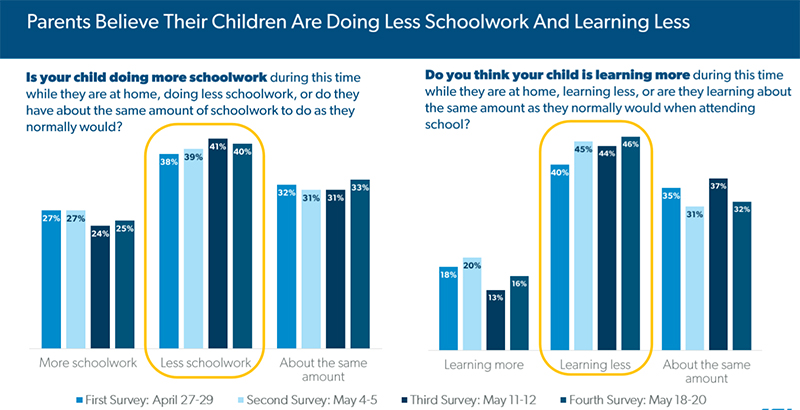
Parent Perceptions: The coronavirus pandemic has disrupted the lives of millions of Americans, but for parents, it has created a unique set of challenges. Many suddenly found themselves homeschooling their kids, working from home, facing reduced hours at their jobs or, in some cases, unemployed. To better understand how parents are navigating these challenges, the American Enterprise Institute is analyzing weekly surveys, conducted by Echelon Insights, of 500 public school parents. The results of these surveys, which began in April, provide a unique insight into the concerns and experiences of parents through their evolving responses to COVID-19, and can help leaders with their plans for reopening schools. Contributors John Bailey and Olivia Shaw break down the top findings. Read the full analysis.
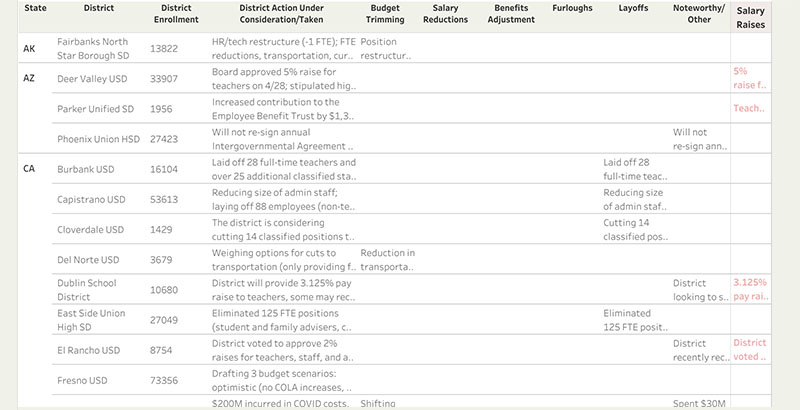
School Finances: It’s tough to overstate just how much the pandemic is asking of school districts and their financial leaders, write contributors Marguerite Roza and Katie Silberstein of Georgetown University’s Edunomics Lab. They’re being asked to budget in the face of whiplash-inducing on-again, off-again reopening scenarios — all set against a backdrop of collapsing state revenues for K-12 education. At Edunomics Lab, they’ve been tracking districts’ budget decisions in the wake of the pandemic-triggered financial upheaval, and while their effort doesn’t provide an exhaustive national picture, it does offer a snapshot of a fast-moving situation. What they’re seeing are some short-term district actions that could have significant — and, in some cases, troubling — long-term ramifications. Among these are awarding emergency financial powers, tapping reserve funds and locking in spending for services that students can’t access while learning at home. “While none of us wished for this wildly uncertain future,” they write, “here we are. The essential job description for district financial leaders continues to be one of leveraging limited resources to maximize student learning. But doing that job is now immensely more complicated than at any time in recent history.” Read the full analysis.
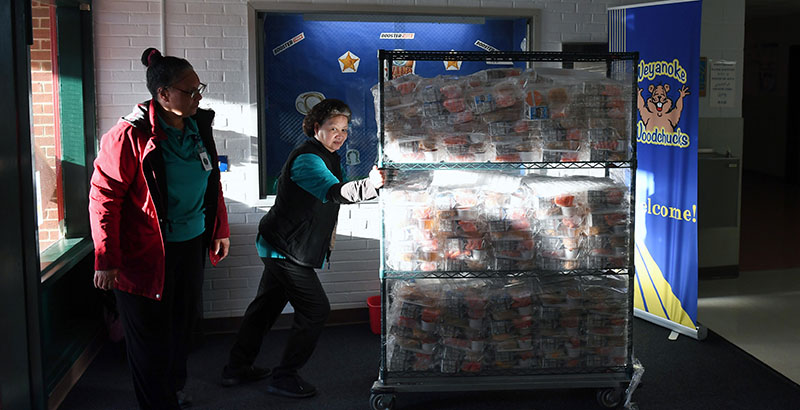
School Communities: The angst that accompanied the decision by many superintendents to close schools in the spring — especially in big urban centers like New York City, Chicago and Los Angeles — was not all about lost learning. If the calculation were merely about missed classroom time vs. public health and safety, the choice would have been simpler. But as contributor Conor Williams explains, our public schools, which serve a majority of the nation’s low-income students, are much more than learning centers. They are where students are fed, receive medical, dental and mental health services and even wash their clothes. As Gov. Andrew Cuomo said during a press conference in March, “Public education is also this state’s child care system. It is this nation’s child care system,” meaning schools allow parents to work and society to function. The coronavirus crisis, Williams writes, “illuminates just how much we now ask of our public education system. That’s the real question. As Americans spend the next few weeks managing their isolated, individual anxieties, it’s worth asking whether the cancellation of classes should mean that large numbers of children go without food.” Read the full essay.
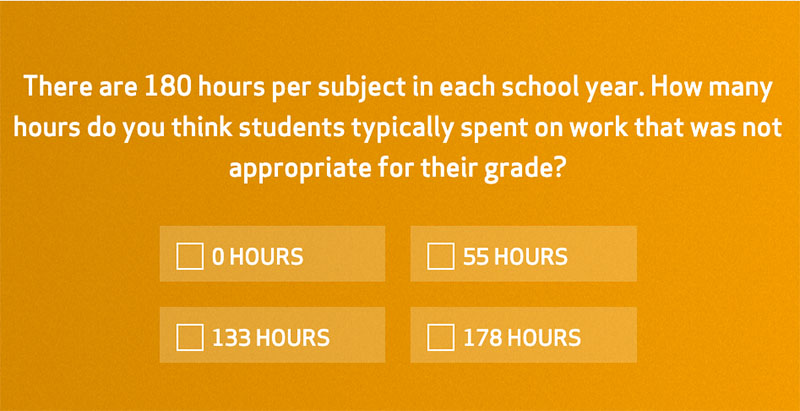
Learning Loss: It’s September 2021. You are a 10th-grade English teacher. Your curriculum says teach George Orwell’s novel 1984, but half your class lacks the vocabulary and interpretive skills to read the book. So you ask those students to read Lois Lowry’s The Giver, a seventh-grade text, instead. Versions of this scene will play out in thousands of classrooms across the country next year, as students who have missed months of learning time finally return to classrooms far behind academically. Giving those students lower-level work to help them catch up — or, in the more extreme version, asking them to repeat an entire grade — has good intentions and a certain logic. It’s also largely ineffective, write contributors David Steiner and Daniel Weisberg; rather than delay access to grade-level material for students who’ve fallen behind, accelerate it, doing focused work with the less-prepared students before the whole class encounters the text. Done right, these interventions can give students who are lagging the ability to handle grade-level assignments at the same time as their peers. ”Even in the best-case scenario, mastering an entirely new approach to catching students up will take time. That’s okay. Just trying to give every child a real chance to do grade-level work, however imperfectly, will lead to far better results than picking and choosing who gets those opportunities. … In the aftermath of this crisis, schools will have an opportunity to provide students, especially marginalized students, with far better academic experiences than they did before. It starts with a commitment to accelerating learning instead of ratcheting it ever downward.” Read the full essay.
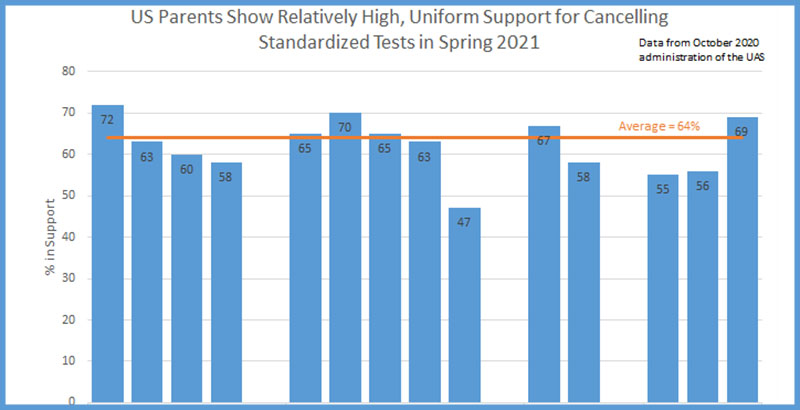
Accountability: In March, with students suddenly learning from home, the U.S. Department of Education granted states a blanket exemption from standardized testing. The decision was relatively straightforward, as there was virtually no infrastructure in place for securely administering high-stakes exams remotely. But with many schools at least partially reopening in the fall, deciding what to do about standardized testing this coming spring is anything but. It’s a complex issue, with historically stressful circumstances for students and teachers on one side and crucially important data on the other. One thing, though is clear, write contributors Daniel Silver and Morgan Polikoff of the University of Southern California: Parents want the tests canceled. The Understanding America Study, administered by the USC Dornsife Center for Economic and Social Research to a nationally representative sample of 1,335 U.S. K-12 households, found the proportion who “support” or “strongly support” such a move has risen steadily from 43 percent in mid-April to 64 percent in mid-October. Read their full analysis of why canceling exams, even with all their challenges, might not be a good idea.
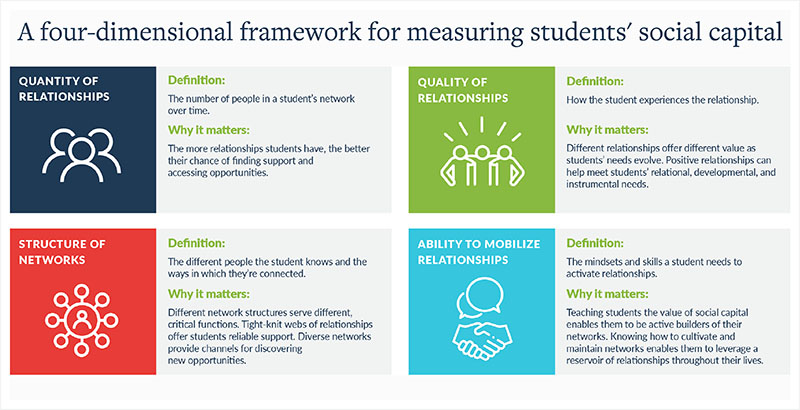
Student Supports: Despite educators’ valiant efforts this past spring, many students still struggled to connect to their peers, teachers and counselors. Some went missing from virtual classes altogether, leaving teachers and principals scrambling to find them. Others, particularly middle and high school students, reported a troubling lack of people to turn to for academic and emotional help. These levels of disconnection threaten both students’ well-being and their academic progress. Surrounding students with an interconnected web of positive relationships is the foundation of healthy youth development, write contributors Mahnaz Charania and Julia Freeland Fisher. And within that web, access to what researchers dub a “person on the ground” — a mentor, tutor, parent or neighbor who is physically present to offer support — is a proven, critical ingredient to successful distance learning. Schools that understand the quantity and quality of relationships at their students’ disposal will be well positioned to sustain their well-being and academic progress in the coming year, whether campuses open or remain closed. Read the full analysis.
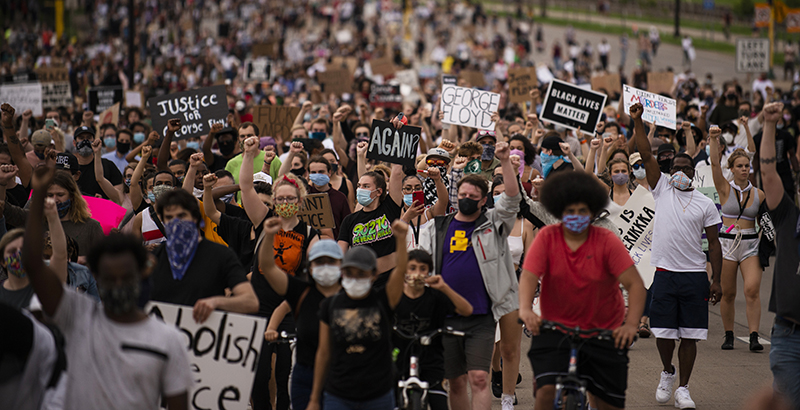
Racism: The image of George Floyd gasping for air held symbolic resonance for contributor Kimberly A. Smith — racism in America’s schools, she writes, is suffocating Black students. But as a Black woman working in education, she knows the system cannot be changed solely by Black leaders or educators; it is centered in whiteness, so transformation resides in the privilege afforded to white leaders, from policymakers to nonprofit executives to superintendents. Hence, the need for “co-conspirators” willing to be unapologetically anti-racist, committed to listening and learning, willing to cede power while using privilege to invite others to lead, uncompromising in providing high-quality education for Black children and prepared to take political risks to advance their needs. The work, she says, must be done in full and equitable partnership with Black leaders in order to shape the pillars of an education institution that values and celebrates Black students. “I seek to identify a national coalition of white education co-conspirators willing to use their privilege to catalyze anti-racist actions in partnership, advocacy and support of Black leaders, with the goal of creating the conditions for Black students to thrive.” Read the full essay.
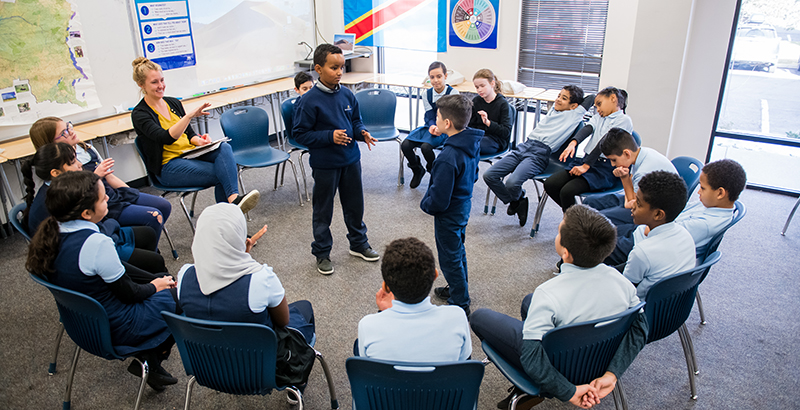
Social-Emotional Learning: As Principal Sara Carlson Striegel prepared to launch the new virtual school year in August, they were working to ensure students have access to high-quality academic resources and teacher guidance. But just as important was for students and teachers to come together in support of their mental health. Last fall, the school launched a social-emotional learning program, Compass Circles, which provides a framework for teachers to host regular meetings with small groups of students. When in person, participants sit in a circle and go through structured rituals where they discuss how they are doing emotionally and support their peers and colleagues in doing the same. When schools began shutting down last spring, they moved their Circle practice online using video conferencing platforms. Once a week, third- through fifth-graders join a Zoom room with other members of their Circle and go through the same sequence they would have in person. From deep-breathing exercises and emotional check-ins to “badge work” and a closing cheer, Principal Striegel describes how this SEL practice works online and the benefits it provides in keeping the school community healthy and connected. Read the full essay.
Go Deeper: See all our top coverage from 2020 in The 74’s ‘Best Of’ Roundups. Get our latest news, commentary and exclusives delivered straight to your inbox by signing up for The 74 Newsletter.
Get stories like these delivered straight to your inbox. Sign up for The 74 Newsletter
